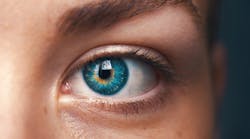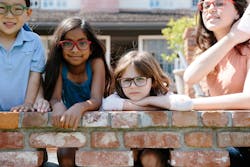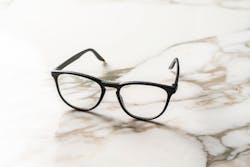Currently, 18.5M kids in the U.S. need prescription glasses and 61% of parents will buy at least two pairs for their children. The result is understandably a costly endeavor. Thanks to continued advances in 3D printing, Fitz Frames is hoping to revolutionize the eyeglass experience.
With an iPhone app, Fitz leverages advanced facial mapping to take accurate measurements down to the millimeter from easy to snap in-app photographs. It offers users a virtual try-on experience, meaning kids can preview all the different options, transforming a previously stressful event into one that’s fun, easy and convenient. Kids can have fun exploring the current catalogue of six frame shapes and eight colors to create unique customized glasses designed specifically for them.
Customers can also manage individual profiles for each child, allowing them to track their orders, update prescriptions, and see previous styles and selections. Prices start at $95. Fitz Frames also offers a subscription option, providing members with two sets of frames and lenses for $185 per year.
Interested in learning more? IndustryWeek had the opportunity to discuss the new company with founder Heidi Hertel.
IW: What printer and materials are you currently using? Do you foresee adding additional materials over time?
Hertel: We currently use EOS equipment and a nylon powder that is fused together through a laser sintering process, as well as water and dye to color the frames. After they have been 3D printed, we have a lens supplier about a mile away in Youngstown, OH. We didn't originally intend to manufacturer our glasses ourselves. But doing so has been one of the best decisions we've made. Maintaining complete control over our process has given us an intimate knowledge of what we needed to change as we developed our designs, understand what features mattered most to customers and taking feedback to create a process that was a better overall experience for our customers. We also have partnered with well-known optometrists and produce quality content to help families to spot if their child may need glasses. For us, it's truly about solving glasses for kids and parents.
IW: How do you see this evolving?
Hertel: Our technology makes it possible for us to keep up with current glasses trends, makes us a compelling partner for collaborations, and means we can pivot to different types of glasses users (athletes, gamers, those with special physical needs, maybe even swimmers one day!) We just released our first limited edition color and plan on doing more user voted styles and color options in 2020. We are also working with organizations on their own color and style - personalization at its fullest!
IW: What challenges have you faced?
Hertel: Like any start-up we faced significant, but diverse challenges in building our app and product. Our app had to be accurate in measuring thousands of points on faces, yet fun and user-friendly. We encountered a whole new set of challenges in manufacturing our frames with 3D printing. Among the complications: finding the right material that would be strong, yet flexible, machines that could print with the precision and the number of frames we needed, a coloring system that would output consistent colors in every batch, a hinge that could withstand the wear and tear required by kid users, a wireframe that keeps lenses sitting correctly inside the frames, the list goes on and on. We knew we wanted to design and manufacture in the USA and we spent a significant amount of time researching facilities before deciding on Youngstown, OH.
IW: How have people responded to the offering?
Hertel: Parents have been thrilled with the convenience factor and being able to leverage their iPhones to order anytime and anyplace. Not waiting in line and going into a storefront has been a game changer. While some companies offer virtual try-on, we have gone a step further and measure over 1,000 points on each face - giving you a truly custom pair of glasses. We have thought about the end-to-end customer experience and for us, it's not just about prescription glasses, customers have really loved the lightweight sunglasses and blue light filtering options too. With so many products being produced overseas, customers have appreciated our commitment to stay local and manufacture in the USA with quality materials. And kids love that they can emboss their name, favorite animal or color.





